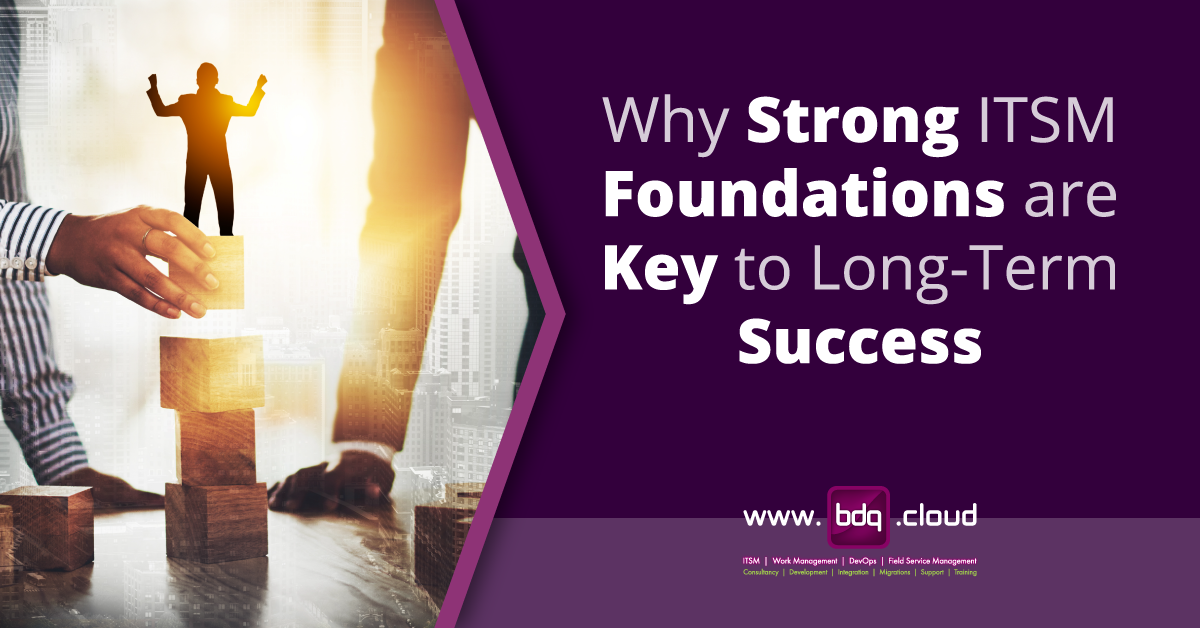Introduction
With nearly 20 years in IT, I’ve had the privilege of working across various roles, from a field service management engineer - before I even knew what ITIL and FSM were - to a Senior Technical Consultant at BDQ. Over the years, I’ve led multiple successful ITSM projects, including complex migrations, system integrations, and tool customizations. Throughout these experiences, one thing has become crystal clear: strong ITSM foundations are critical to long-term success, no matter what tool you use.
ITSM Foundations: The Key to Sustainable Success
Many organizations focus on selecting the “best” ITSM tool, but the reality is that tools are secondary to well-defined processes. A properly built ITSM foundation ensures:
-
Consistent and efficient service delivery
-
Reduced operational costs
-
Enhanced customer satisfaction
-
Scalability and flexibility for future growth
When ITSM is implemented correctly, it provides value for years, regardless of budget constraints or changing technologies. It’s not about the tools - it’s about the service value chain and how well it aligns with business goals.
Common Pitfalls in ITSM Implementations
Through my experience, I’ve seen several common mistakes organizations make when implementing ITSM:
-
Lack of Clear Objectives & Strategy – Without a well-defined vision, teams struggle with alignment and execution.
-
Overcomplicating the Implementation – ITIL principles are simple, but many over-engineer processes, creating unnecessary complexity.
-
Ignoring User Experience and Resistance to Change – People are the most challenging part of ITSM. Process adoption is only successful when users see real value.
-
Selecting the Wrong ITSM Tool – A tool should support well-established ITSM practices, not dictate them.
Best Practices for Building Strong ITSM Foundations
To avoid these pitfalls, organizations should focus on core ITSM best practices:
-
Start Where You Are – Assess existing processes and identify gaps before making drastic changes.
-
Define Three Critical Service Value Chains – Identify the most essential processes for your organization and document them.
-
Simplify and Iterate – Avoid overcomplication. Begin with quick wins and build upon them.
-
Focus on People and Culture – ITSM success depends on collaboration, leadership support, and fostering a culture of continuous improvement.

Leadership and Culture: The Deciding Factors
Strong ITSM foundations thrive in environments where leadership supports the initiative. A well-aligned leadership team can drive ITSM success, while a disengaged one can hinder progress. The cultural aspect of ITSM cannot be ignored—people will make or break the system.
Strengthening Weak ITSM Foundations
If an organization finds itself struggling with ITSM maturity, the best approach is to start small and identify quick wins. Rebuilding ITSM from scratch is rarely necessary. Instead, focus on:
-
Assessing current strengths and weaknesses
-
Identifying key pain points and addressing them first
-
Improving communication and collaboration within teams
-
Gaining leadership buy-in for gradual improvements
Conclusion
A strong ITSM foundation is not just about following ITIL frameworks or using the best tools—it’s about creating a sustainable, efficient, and people-centric approach to IT service management. Companies that prioritize well-structured ITSM practices benefit from long-term stability, improved service quality, and a competitive edge.
By taking a strategic and pragmatic approach, organizations can ensure that their ITSM framework stands the test of time, regardless of industry changes or technological advancements.
Ready to modernise your ITSM setup with Jira Service Management?
Contact BDQ today and let’s start the conversation.













